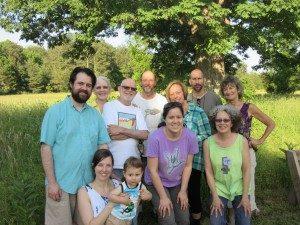
Throughout my life I’ve lived in a number of accommodations. I grew up in a three-bedroom home in a comfortable middle-class area of the San Fernando Valley, north of Los Angeles, California. When I went to college I lived on campus with roommates and then in an off-campus apartment near the beach. In graduate school I lived in a shared apartment and even lived in a large house with five other people. When I was married I lived in an apartment, two houses and after my divorce purchased my own home. During my three years in India I lived I in a flat in the home of a joint family. It was so big that I had a small basketball hoop inside. In Nepal I lived in a shared flat, in a small room at an NGO and in doctor’s quarters at a rural hospital. Since moving back to the States I’ve lived in a house in Tucson, Arizona and now live with a Nepali man in his home in Durham, North Carolina.
I’ve always been intrigued by what it would be like to live in cooperative housing something which I studied while obtaining my MA in Sociology from Boston College. Although most people want to own their own homes, there is something both challenging and nourishing about living in a working community.
I found out about Hart’s Mill Ecovillage & Farm from a couple at a Self Realization Fellowship potluck lunch. Given my background and strong interest in cooperatives I was intrigued that a group of people not too far from where I’ve been living, was going through the hard work of developing a real community.
Living in a single family home in the US usually equates to living in a neighborhood. In middle class America single family homes are very close together. As a youth I remember playing a variety of sports with neighborhood children, but I don’t remember sharing meals or spending a lot of time at one another’s homes. We knew our neighbors but not in a more intimate sense. If there was an emergency we would help one another.
The mission of Hart’s Mill Ecovillage is “to actualize an agrarian intentional community that is regenerative, collaborative, creative, and celebratory in all that we do”. The closest that I can think of is In Israel where there are kibbutzim which are communal settlements in which all wealth is held in common and profits are reinvested in the settlement. Cohousing communities are also somewhat similar. These all might come under the heading of an intentional community.
Given my life philosophy I’ve always wanted to live in community. But I’ve never quite found this as I lived the life of a suburbanite in the US. Although my Hindi and Nepali were quite poor, while living in India and Nepal I felt more part of a community than anywhere else. But this seems to be integrated into the culture. However, this is changing as more families see western living, i.e. single-family homes as the way to go. But what people don’t realize is that living in a single-family home means land degradation as people want larger homes. One can see this happening on a regular basis in the Raleigh-Durham (Triangle) area of North Carolina. It is beyond me as to why people need to have gigantic homes which use lots of resources. (Americans constitute 5% of the world's population but consume 24% of the world's energy)
Human beings are naturally communal. However, many people tend to be solely focused on themselves and their families resulting in accumulation of wealth and showing this by having huge homes, no matter family size. As indicated in this article there are numerous alternatives for building community while not abusing available resources.
In doing a google search for housing communities in Nepal nothing turned up. However, I did find that an NGO called Good Earth Global was building “earthbag” homes. Imagine a Nepal in which people enhance their way of living by showing the world how to really live in community.










Add new comment